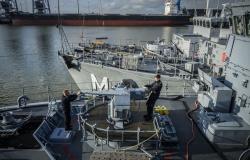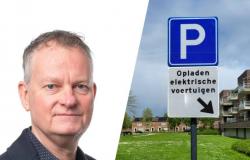It is technically feasible: the Netherlands will be climate neutral by 2050, including the bunker fuel for aviation and maritime shipping refueled here. In new research, the PBL calculates more than thirty techno-economic pathways to a climate-neutral Netherlands with a comparable economic structure to that of today. Postponing or excluding options in advance makes achieving climate neutrality in the Netherlands almost or even completely impossible by 2050. It is not a matter of either-or, but of both-and. Given the uncertain availability of energy sources and technologies, all building blocks are useful and necessary, including more controversial options such as the use of bio-raw materials, CO2 capture and storage (CCS) and adjustments in agriculture and rural areas.
Switch to electricity where possible
Electricity is the workhorse of the climate transition. In cost-optimal ways to a climate-neutral Netherlands in 2050, electricity production will grow by a factor of three to five. More than half of the energy will come directly or indirectly from solar, wind and nuclear energy. Energetically, it makes sense to use electricity instead of fossil fuels wherever possible. But aviation and maritime shipping cannot be electrified: carbon remains needed here as a raw material for bunker fuel production, as well as in the chemical industry. Here, bio raw materials (3 to 6 times as much as now) and hydrogen become the necessary replacements for the current fossil energy carriers.
Biomass with CCS for electricity production is not an obvious choice
When using bio-based raw materials with CO2 capture and storage (BECCS), one often thinks of capturing CO2 emissions from biomass power plants for electricity generation. However, this option is not obvious. The scarcity of sustainable bio raw materials requires higher-quality use than direct combustion for controllable electricity production. There are other sources for this, while there are no alternatives for the production of advanced biofuels for aviation and shipping. The production of these bunker fuels also produces a relatively pure stream of CO2 from continuously running factories. Capturing this almost pure CO2 is much more energy efficient and cheaper than capturing it from flue gases from biomass power stations with a many times lower concentration of CO2, which will also only run sporadically to meet peak demand.
Availability of bio-raw materials and hydrogen are bottlenecks
The supply of sustainable bio raw materials and green hydrogen (from renewable electricity) will have to multiply. Scaling up production and logistics in the short term is urgent. But in the period up to 2050, these indispensable substitutes for fossil fuels will remain scarce. The scarcity leads to high prices, which will make electric alternatives more attractive where possible. An international market will probably emerge for green hydrogen. By creating more generation capacity for renewable electricity and building electrolysers for hydrogen production, the Netherlands will become less dependent on it. But that also requires more labor and materials, which may also be scarce. These preconditions have not been specifically investigated. If the availability of bio-based raw materials and hydrogen is disappointing, climate neutrality in the Netherlands in 2050 will become considerably more expensive or even impossible due to changes in the use of energy and raw materials. Then climate neutrality is alone
feasible through more CO2 storage or a different lifestyle that requires significantly less energy and raw materials
are used.
Climate neutral in 2050 does not necessarily mean fossil-free
A climate-neutral Netherlands in 2050 does not have to be fossil-free. Most of the cost-optimal processes calculated still use some fossil fuel, the emissions of which are compensated within the Netherlands. A complete cessation of fossil fuels requires specific policy and increases the demand for scarce bio-raw materials and hydrogen. Lower fuel demand and more sustainable heat make the Netherlands less vulnerable to disappointing availability of bio-based raw materials and hydrogen. To use fossil raw materials
To replace plastic production, high-quality reuse of plastics is crucial, due to the limited availability of bio-based raw materials. Reuse also limits and postpones the CO2 emissions that would otherwise be released when the plastics are burned.
Negative emissions necessary
To achieve climate neutrality within our national borders, negative emissions are necessary: capture and storage of CO2 from bio-based raw materials (BECCS) to compensate for emissions that are difficult to avoid, including in agriculture. The routes calculate with 20 to 50 megatons of CCS annually in 2050 [op een geschatte totale opslagcapaciteit onder de Noordzee van 1700 megaton]. This compensates for residual emissions from agriculture and land use, remaining use of fossil fuels and waste incineration, among other things. Residual emissions from rural areas would only disappear if the livestock population declined by more than three-quarters together with large-scale forestry, something that was not part of the investigated routes.
An integrated view is of great importance
It is very important to consider the energy and raw materials system integrally. For example, from the perspective of the built environment, it seems attractive to wait for green gas or green hydrogen, which requires few adjustments to homes. But the scarcity of sustainable gases will be great due to demand from sectors where no alternatives exist. This will probably push the price up so much that any cost benefits for the built environment will evaporate and heat networks and heat pumps will become the most attractive options. At the same time, eliminating even the last bits of emissions from a sector can be more expensive than compensating for them elsewhere. It is good to take this into account when setting sectoral goals.
Climate neutrality requires policy acceleration
The calculated trajectories assume a linear decrease in emissions between the legal target of 55% reduction in 2030 and climate neutrality in 2050. This will achieve almost an 80 percent reduction in 2040. In February, the European Commission proposed a European target of a 90 percent emissions reduction by 2040. It is still unclear what exactly that would mean for the Netherlands. Many of the calculated routes are in line with existing European policy. In all cases, a lot of additional policy will be needed for the period after 2030 to achieve the necessary scale-up. It is important that a clear policy for negative emissions is quickly introduced. These still fall outside the ETS emissions trading system, which means that the capture of CO2 from bio-based raw materials is not rewarded and projects for future capture and storage of biogenic emissions do not get off the ground.
Tags: Controversial options needed climateneutral Netherlands
-





